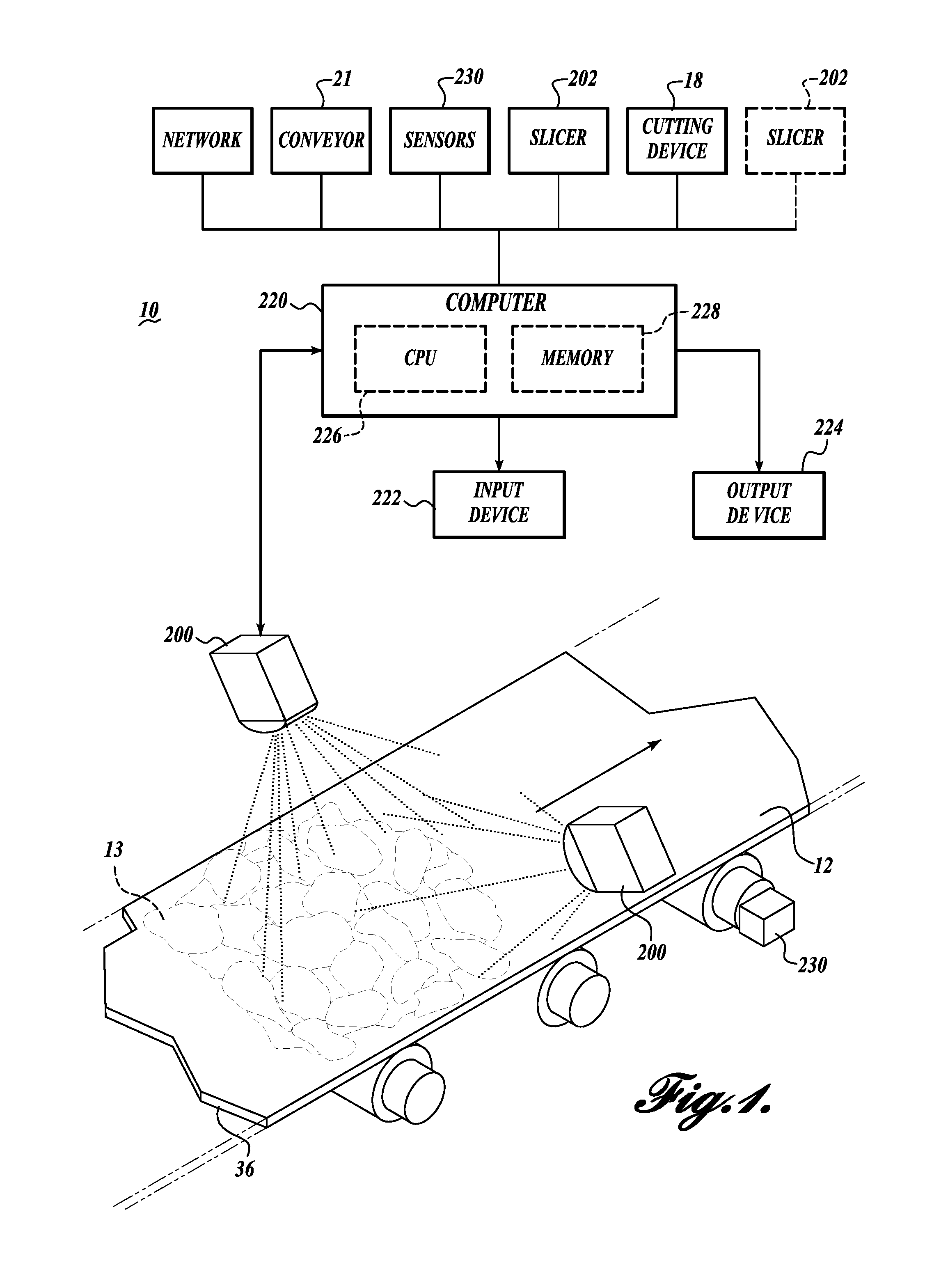Two-axis dicing of a work product with a fluid jet portioner
a technology of fluid jet portioner and work product, which is applied in the direction of metal working apparatus, etc., can solve the problems of many pre-slicing machines that are difficult to accurately adjust to the ideal height, the shape will not fully match the cutting pattern, and the weight variation among the diced pieces is undesirabl
- Summary
- Abstract
- Description
- Claims
- Application Information
AI Technical Summary
Benefits of technology
Problems solved by technology
Method used
Image
Examples
Embodiment Construction
Overall System
[0033]FIG. 1 schematically illustrates a system 10 suitable for implementing an embodiment of the present disclosure. The system 10 includes a moving support surface in the form of a conveyor 12 for carrying a work product 13 generally in the form of a sheet extending along the conveyor, to be portioned. The work product may be a food product such as meat, poultry, fish that are arranged as a sheet or stream extending along the conveyor. The sheet / stream may not always be uniformly continuous, but it is contemplated that the work product will extend generally continuously along the conveyor. Other types of work product may include, for example, sheets or lengths of rubber or cardboard, or a section of plastic or wood material extending along the conveyor. In a scanning aspect, the system 10 includes a scanner 200 for scanning the work product 13. In a cutting or dicing aspect, system 10 may include a cutter 18 (or an array or series of cutters similar to or the same as...
PUM
| Property | Measurement | Unit |
|---|---|---|
| width | aaaaa | aaaaa |
| length | aaaaa | aaaaa |
| speed | aaaaa | aaaaa |
Abstract
Description
Claims
Application Information
 Login to View More
Login to View More - R&D
- Intellectual Property
- Life Sciences
- Materials
- Tech Scout
- Unparalleled Data Quality
- Higher Quality Content
- 60% Fewer Hallucinations
Browse by: Latest US Patents, China's latest patents, Technical Efficacy Thesaurus, Application Domain, Technology Topic, Popular Technical Reports.
© 2025 PatSnap. All rights reserved.Legal|Privacy policy|Modern Slavery Act Transparency Statement|Sitemap|About US| Contact US: help@patsnap.com



